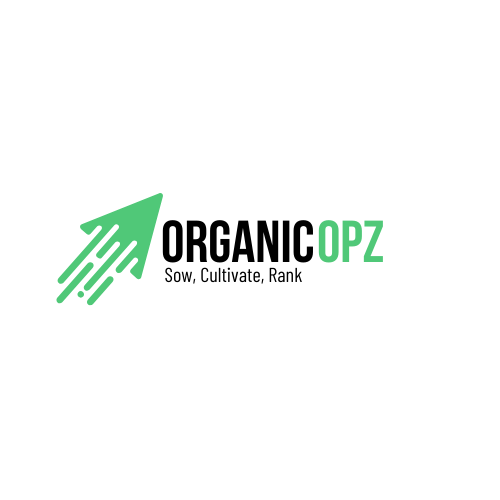The Rise of Utility NFTs: What Developers Need to Know
 OrganicOpz
OrganicOpzThe Rise of Utility NFTs: What Developers Need to Know
Non-fungible tokens (NFTs) have quickly evolved from digital art and collectibles into practical tools with real-world applications, known as utility NFTs. As blockchain technology grows, developers are discovering new opportunities to harness the potential of utility NFTs in areas like gaming, membership access, supply chain management, and more. If you're a developer, it's essential to understand the impact and possibilities of utility NFTs.
What Are Utility NFTs?
Unlike traditional NFTs, which often represent digital art or collectibles, utility NFTs provide real-world value or functionality beyond ownership. These tokens might grant access to exclusive content, serve as membership tokens, or unlock unique features in a digital environment. For developers, utility NFTs open up endless possibilities to create more interactive and valuable experiences for users.
Key Features of Utility NFTs
1. Interactivity and Functionality
Utility NFTs go beyond static assets. They can be programmed to interact with smart contracts, offering users dynamic functions. For example, in gaming, a utility NFT could be a character that evolves over time based on in-game performance or milestones.
2. Token-Gated Access
Developers can leverage utility NFTs to create gated content, services, or events. By owning specific NFTs, users can gain access to premium features, early product releases, or exclusive communities. This model is gaining traction in industries like entertainment and membership programs.
3. Proof of Ownership and Authenticity
Utility NFTs offer decentralized proof of ownership and can be integrated with blockchain-based verification systems. Whether it's verifying the authenticity of luxury goods or providing secure digital access to event tickets, utility NFTs ensure transparency and reduce fraud.
How Developers Can Leverage Utility NFTs
1. Build with Smart Contracts
Utility NFTs rely heavily on smart contracts, which automate the functions tied to the token. Developers need to write robust, secure smart contracts that define the rules for NFT functionality, ensuring they interact properly with decentralized applications (dApps).
2. Explore Interoperability
A major benefit of utility NFTs is their interoperability across platforms. By creating NFTs that can function across different blockchain ecosystems or within multiple applications, developers can provide greater value and flexibility to users.
3. Design Tokenomics
To create utility NFTs that retain value over time, developers must focus on tokenomics. This includes setting a supply cap, deciding whether NFTs are tradable or non-transferable, and determining how the NFT will maintain or increase its utility.
Real-World Applications of Utility NFTs
1. Gaming
Utility NFTs have revolutionized gaming by giving players true ownership of in-game assets. Players can buy, sell, or trade these assets, creating a vibrant secondary market. Additionally, certain NFTs can offer game-enhancing benefits, such as weapons or characters, providing a competitive edge.
2. Membership and Subscriptions
By using NFTs as membership tokens, companies can offer exclusive content, services, or perks to their customers. For instance, NFT-based memberships could provide access to virtual events, premium content, or VIP features.
3. Supply Chain Management
Utility NFTs can track the journey of goods from production to delivery, ensuring transparency in supply chains. By tokenizing each stage of the process, consumers and companies can verify the authenticity and condition of products in real-time.
Challenges for Developers
While utility NFTs offer exciting opportunities, they come with technical challenges. Developers need to ensure scalability and security, especially when handling high transaction volumes. Cross-chain compatibility is also an area of ongoing development to make NFTs more versatile across platforms.
Meta Description
Learn about the rise of utility NFTs and how developers can harness their potential for creating interactive and functional digital assets.
Conclusion
The rise of utility NFTs represents a shift in how digital assets are perceived and used. For developers, the potential of utility NFTs lies in their ability to offer real-world value and unique user experiences. By understanding their core functionality and leveraging the right tools, developers can unlock a wealth of opportunities in this growing space.
If you're ready to start building with utility NFTs, now is the time to dive in. Whether you're working on gaming, membership models, or supply chain transparency, utility NFTs provide the framework for innovative solutions that can redefine user engagement and product functionality. Start exploring today!
Unlock the Full Potential of Blockchain
Transform your business with our expert blockchain development services. We specialize in secure smart contract creation, building robust decentralized applications (dApps), and seamlessly integrating blockchain solutions into your existing systems. Enhance efficiency, security, and transparency with our customized solutions tailored to your needs.
Blockchain Services: Learn More
Subscribe to my newsletter
Read articles from OrganicOpz directly inside your inbox. Subscribe to the newsletter, and don't miss out.
Written by

OrganicOpz
OrganicOpz
Welcome to OrganicOpz, your partner in cultivating organic growth and optimizing your online presence. We specialize in personalized SEO strategies designed to help you rank higher, attract more organic traffic, and achieve long-term success in the digital landscape.